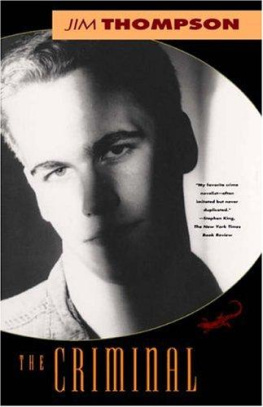Table of Contents
Most Berkley Books are available at special quantity discounts for bulk purchases for sales promotions, premiums, fund-raising, or educational use. Special books, or book excerpts, can also be created to fit specific needs.
For details, write: Special Markets, The Berkley Publishing Group, 375 Hudson Street, New York, New York 10014.
To the memory of the victims of these horrible murders, their families, and the detectivespast and presentwho worked so hard on these cases; as well as to the victims and their families in every cold case, who wait so long for closure, which sometimes never comes.
Acknowledgments
I would like to thank the following agencies and individuals:
Bob Miller, Jon Rust, Cape Girardeau Police Department, Paul Echols, Jim Smith, Sam Blackwell, Cape Girardeau County Sheriffs Department, Cape Girardeau County Prosecuting Attorneys office, Bill Moushey, Berkley Books, Denise Silvestro, Steve Harris, Shannon Jamieson Vazquez, Meredith Giordan, Elizabeth Dodd, Peg McNichol, Sharon Sanders, Aaron Eisenhauer, Rudi Keller, Dustin Schoof, Amber Heimbach, Aunt Donna, Mom and Dad.
Prologue
The old man sat hunched over in the cramped visiting room of the Cape Girardeau County Jail, shoulders bunched together, skin nearly translucent against the neon orange of his jumpsuit.
He didnt look like a monster.
Salt-and-pepper hair cut close to a scalp that was prison-pale, deprived of sunlight for the past twenty-four years, Timothy Wayne Krajcir looked like a grandfather sitting in a nursing home hoping for a visit from his family. What he didnt resemble was a man facing a string of felony charges for some of the most brutal murders, rapes, and robberies in the history of Cape Girardeau, Missouri.
He peered at me through thick, black rubber glasses that had been issued to him since his move to the county jail from the maximum security facility in Tamms, Illinois. Some prisons issue rubber frames to inmates with glasses so the pieces cant be broken and made into weapons. Krajcir wasnt happy about his latest eyewear, according to Detective Jimmy Smith. He was accustomed to thin, silver wire frames, and much preferred those. He had been relocated so he could be tried for five unsolved murders in Cape Girardeau. State law mandated he needed to be transferred to the custody of the county in which he was being charged.
Like Krajcir, Detective Smith had gray hair, but his was a more distinguished silver white. Smith sat stiffly in the folding chair at the head of the flat counsel table in the tiny, unadorned room. The visiting rooms at the county jail are little more than cells, far different from the brightly lit, spread-out areas, complete with vending machines, that the Missouri state prisons usually provide for inmates and their visitors.
In my time as crime reporter for Cape Girardeaus main newspaper, the Southeast Missourian, I had done several interviews with state inmates at the Missouri Department of Corrections, but never in Capes county jail. John Jordan, longtime sheriff of Cape Girardeau County, usually didnt permit media interviews, but hed made an exception today.
Krajcirs eyes were the most salient aspect of his appearance. Behind the glasses, they burned like dark holes in his ghostly face. Slight stubble dotted a rounded and fleshy jaw. He looked almost comical, the fuzzy gray buzz cut and thick black frames lending a caricature-type appeal to his face. His current gaunt physique did not hint at the athletic prowess Id been told hed once possessed: his former warden at the Illinois prison had described Krajcir as the best athlete hed ever seen. Basketball was his game, as was baseball. In prison, hed mostly associated with the other jocks. Sports had defined him during his time as an inmate.
The Timothy Krajcir I faced across the table was no longer that athlete. His body pitched forward slightly, sixty-three years of age showing in every line on his haggard face and in his slumped frame, still tall at over six feet, but now becoming frail and lacking definition. A combined thirty years spent in the Illinois prison system hadnt done him any favors. Shackles encased Krajcirs ankles and handcuffs bound his hands, rendering him helpless. Smith and a burly sheriffs deputy sat at the table anyway.
Krajcir had shown little interest in publicity up until this point. It was the third time Id laid eyes on the man, and I still found it difficult to reconcile the slaughter wreaked upon the town of Cape Girardeau with the shriv eled elderly gentleman who sat before me. His arrogance didnt match his looks. The conceited air struck me immediately. It was the attitude of someone who sincerely believed he possessed an intellect superior to everyone elses in the room.
Krajcir had already been safely behind bars in an Illinois state prison, serving the remainder of a sentence for child molestation after violating his parole in 1983. The homicides, five in Cape Girardeau, and four more in other cities, had occurred from 1977 to 1982. Krajcir had held his tongue for over two decades, only to confess once police used DNA to link him to one of the murders.
In the state of Missouri, the man faced five charges of capital murder, seven counts of sexual assault, and one armed robbery charge. Practically every killing contained some elementkidnapping, brutality, lying in waitnecessary to constitute a capital offense. Krajcir was guilty of all three elements in some, if not all, of the murders he was charged with. The sexual assaults that accompanied the murders more than satisfied the issue of brutality. Hed also kidnapped his victims, twice crossing state lines, had broken into their houses, and lain in wait for their return.
The slew of heinous offenses wouldve been enough to guarantee a death sentence in Missouri under normal circumstances, but without Krajcirs cooperation, these cases would never have come to conclusion. Rape victims and family members of those whom Krajcir had killed would never know the identity of the person responsible for destroying their lives. Without Krajcirs willingness to confess, he wouldve merely remained a potential suspect in the most terrifying murders ever committed in Cape Girardeau, just added to lists of hundreds of other suspects whod had motive, opportunity, or were just plain oddballs from nearby neighborhoods. The fact was, the police needed Krajcirs confessions to secure a conviction. That had been enough to stay the mans execution.
In December 2007, Krajcir pleaded guilty to the 1982 killing of pretty, bright Deborah Sheppard, a coed found dead in her apartment a few blocks off the campus of Southern Illinois University, the same school Krajcir had attended. Sheppards murder was the crime that had ultimately unraveled the string of homicides for police, when DNA evidence was discovered incriminating Krajcir.
Carbondale, Illinois, police detective Lieutenant Paul Echols was the detective whod solved the Deborah Sheppard case, when he matched DNA from Sheppards apartment to Krajcir, whose genetic profile was in the national database of convicted felons. Echols had garnered a reputation for being successful with cold-case homicides when he solved the murder of Susan Schumake, who died in 1981, her body found on a walking trail of Southern Illinois University; the homicide had gone unsolved for twenty-three years before Echols got hold of the case. He used DNA obtained from cigarette butts to match the genetic profile of a suspect in the murder to samples found at the crime scene and preserved. He got a hit with Daniel Woloson, and after Wolosons conviction, the chief of the Carbondale Police Department turned Deborah Sheppards case over to Echols in the hopes hed have the same success. His hopes were fulfilled, and then some.












